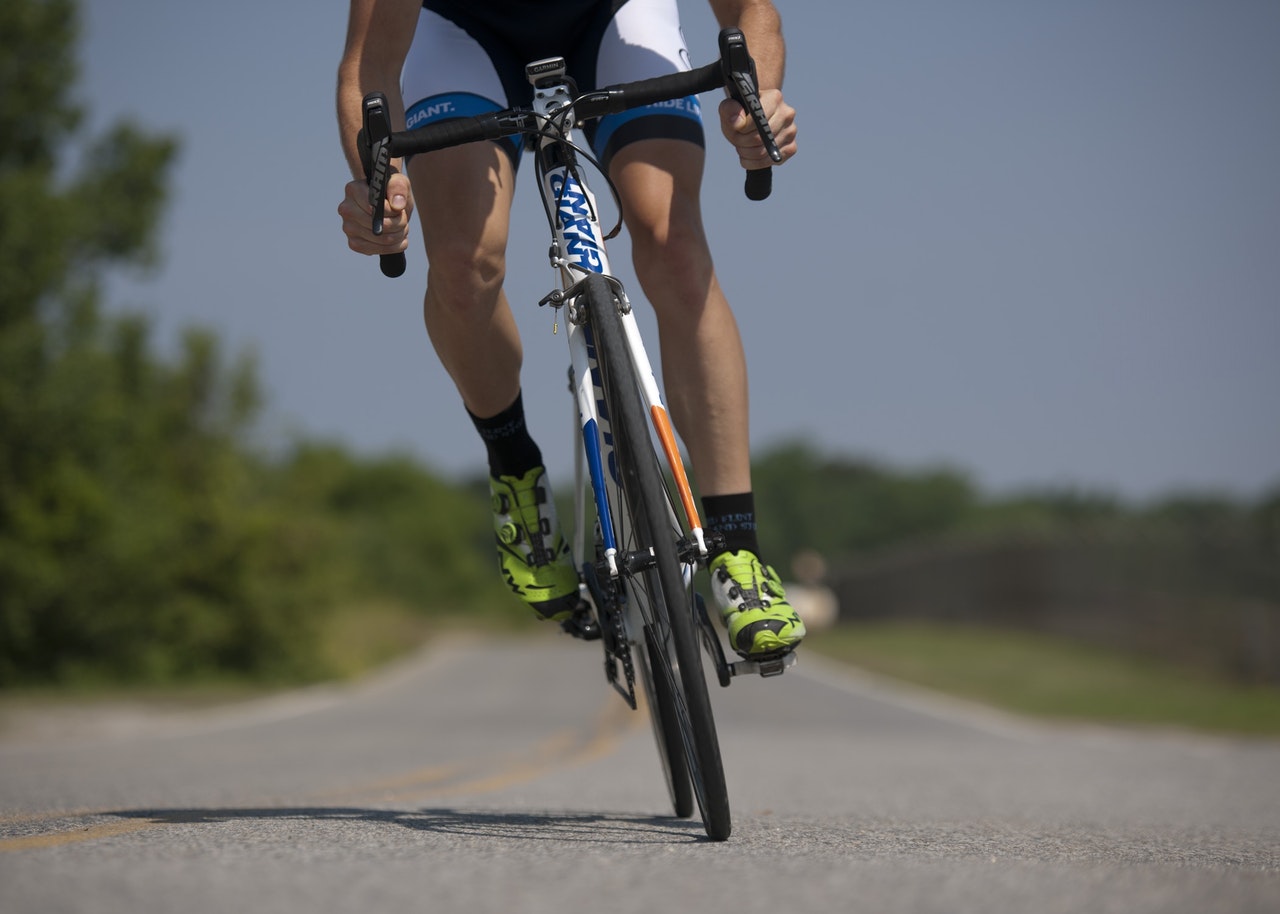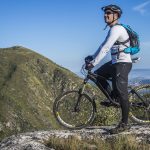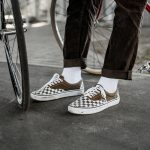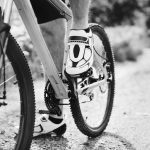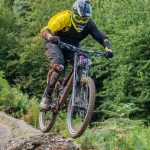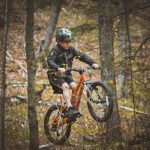One footwear question many mountain bikers debate is whether flat pedal shoes make a good choice on the trails. Flat shoes emerge as an appealing middle ground between sneakers and premium clipless kicks. But do their benefits justify getting dedicated flat pedal footwear? Let’s dig into some of the key pros and cons to help decide if flats are right for you.
Excellent Pedal Grip
A major advantage flat pedal-specific shoes offer is their tenacious pedal grip compared to sneakers or skate shoes. Their sticky rubber soles create almost tackiness when weighted on the pedals for maintaining solid contact. Even during aggressive moves and over rough terrain, feet stick in place without slipping or bouncing off unexpectedly.
The best flat shoes use advanced rubber compounds pioneered by companies like Five Ten and Vibram. These rubbers achieve a sweet spot of being soft and flexible for molding traction, yet durable and long wearing too. Quality soles conform just enough to the pedal pins and chassis for enhanced pedal feel without excessive flex or compression robbing power.
Power Transfer and Traction
In addition to enhanced grip, flat pedal shoes also transmit power to the pedals very efficiently using stiff midsoles and shanks. Cheap sneakers flex and twist dissipating energy with each pedal stroke. But the rigid platforms found in quality flat shoes keep all those watts driving straight down into the pedals with no loss.
Stiffer soles also boost traction when scrambling and hiking too. Those firmer footbeds help the tread bite into softer surfaces preventing slippage and slides. Extra ankle protection helps when hooking pedals or weighting the rear during flow moves as well. Overall, flat pedal shoes couple pedal feel with support for maximum power transfer in any situation.
Natural Foot Movement
Another benefit involves the freer range of foot movement flat pedals allow compared to being locked into clipless bindings. With flats, feet can easily shift position, quickly disengaging pedals for dismounts or putting a foot down. This natural foot freedom also enhances certain techniques like pumping terrain, whipping corners or pulling manuals and stalls.
For certain riders, flat pedals feel more comfortable and intuitive compared to the locked-in sensation of clipless pedals. Less twisting and unweighting motion required when entering turns or landing jumps. The lack of cumbersome cleat mechanism bolting feet to the pedals provides a “closer to the bike” feeling for some. This more natural feel boosts confidence especially for beginners or riders tackling extra gnarly terrain.
Walkability Makes Hike-a-bikes Easier
Flat pedal shoes also prove invaluable whenever sections of trail require hiking the bike. Their grippy rubber soles provide solid traction over roots, rocks and mixed surfaces when pushing uphill or negotiating obstacles on foot. Additional toe protection survives any pedal strikes or snags too.
Some flat kicks incorporate aggressive tread patterns and hiking boot-inspired lugs maximizing grip for serious hike-a-bike situations. Others build in ankle protection and additional support similar to approach shoes. Overall, the versatile traction and scrambling capabilities allows tackling any dismounted sections instead of babying flats through them. Just slam a foot down for instant solid purchase on any terrain.
Simplified Maintenance and Durability
Another nice feature comes in the simplicity of flat pedal setups. With no cleats to fiddle with, flats make getting rolling more straightforward each ride. Just slip on some flats and go, without any hardware adjusting or fear of clogging up the mechanisms. Dismounts feel fluid just kicking off anytime instead of staying semi-attached or twisting to release locks.
Flat shoes tend to hold up well to abuse too without excessive wear issues. The sticky rubber lasts a long time resisting tears or delaminating even with poor foot unweighting skills. Wear just leads to slightly shallower treads instead of full-on failure from shearing a cleat off. Less hardware and mechanisms overall simplify durability.
Less Knee Strain Potential
For some riders with finicky knees, flat pedals may reduce strain enough to remain comfortable on longer rides. Being locked into a fixed forward pedal position can create knee stress as movement gets restricted cycling through pedal strokes. But flats allow subtle shifts to better self-regulate knee tracking and pressure points.
Clipping in also forces knees to describe a fairly rigid circular pedal rotation. With flats, more free float exists to pedal through the deadspots using more natural elliptical patterns. This minor variation often better accommodates individual flexibility and prevents cranking under too much duress. Riders with touchy knees sometimes find relief continuing with flat pedal systems.
Less Upfront Cost and Easier to Switch
When considering flat pedal shoes, the lower upfront cost rates as another attractive incentive too. Premium clipless kicks often run as much as quality mountain bikes these days. Meanwhile nice flat pedal shoes typically price out at a small fraction of those clipless setups. The more affordable entry point helps stretch footwear budgets further.
Flat pedal shoes also make transitioning between pedal systems easier too. The shoes themselves remain compatible whether you want to run burly platform flats, slim composite flats or even clipless pedals. So riders can switch pedal styles more freely before committing to one or the other without having to buy all new kicks. This flexibility helps for riders still deciding their ultimate pedal preference.
But Some Drawbacks Too
While flat pedal shoes offer a nice alternative to super stiff clipless models, they still suffer some minor limitations compared to top-end kicks. The relaxed soles and lack of cleat connections do sacrifice a little power transfer efficiency and pedal lockdown. Foot positioning awareness gets more critical to keep optimum form. Aggressive cornering and stunting may lack that last iota of direct connection to wrangle the bike around.
Relying solely on gravity’s pull against sticky rubber also creates some potential for unexpectedly disengaging from the pedals on big hits or landings. Most shoe-pedal combos do an excellent job avoiding unwanted dismounts, but still may lack the ultimate retention assurance awarded by clipping in. And ultimately when chasing top speeds and race performance, cleats and rigid soles prove fastest.
Flat Pedals – Jack of All Trades?
Overall though, flat pedal shoes make an excellent all-around choice suitable for most trail riding situations and ability levels. The positive blend of grip, pedal feel, durability and walkability really hits the sweet spot for many recreational and freeride-focused mountain bikers out there. Flats don’t quite achieve the absolute performance potential of race-focused clipless systems. But their “jack of all trades” mastery still makes them shine.
For beginner and intermediate riders still developing skills, flats make a great way to build fundamentals without stressing over being attached to the bike. The more forgiving nature instills confidence while developing technique and body movements naturally. Upgrading flat pedal shoes proves an affordable stepping stone too by providing many benefits over sneakers before splurging on full clipless systems.
For advanced riders primarily focused on enduro, downhill or freeride disciplines, many consider flat pedals and shoes a more ideal solution than clipless. The ability to quickly ditch or reposition feet proves invaluable for managing unexpected terrain or body positioning for certain tricks and stunts. Some elite-level riders actually choose flats over clipless for handling the biggest terrain.
Ultimately, the versatile performance and reasonable pricing of quality flat pedal shoes opens up the sport and its various disciplines to more riders. Whether you want casual cruising, rowdy downhill shredding or a little of both, flat systems backed by solid footwear make an appealing option for any mountain biker. While perhaps not unlocking the final inth of performance, most find flats completely adequate for still maximizing fun however you choose to ride.
Summary
For day-to-day trail riding and overall versatility, flat pedal specific shoes definitely rate as a great footwear solution for mountain biking. Their grip, power transfer and walkability capabilities far surpass just using sneakers or skate shoes. And while lacking the ultimate efficiency and security of clipless systems, flats still perform admirably whether shredding park or just cruising mellower singletrack.
Flat pedal shoes in particular boost control, protection and trail confidence significantly compared to wearing standard street shoes. Major brands like Five Ten helped pioneer the category with heavy lugged soles providing maximum pedal feel and scrambling ability for an affordable price point. And these shoes greatly ease transitions between different pedal preferences before committing.
So for most mountain bike applications outside elite competition and racing, flat shoes prove an stellar footwear option certainly worth considering. Their combination of efficiency, grip, durability and off-bike walkability capabilities cover most riders’ needs exceptionally well for regular trail adventures. Unless chasing maximum marginal gains, quality flats often deliver performance and fun that’s completely good enough.
